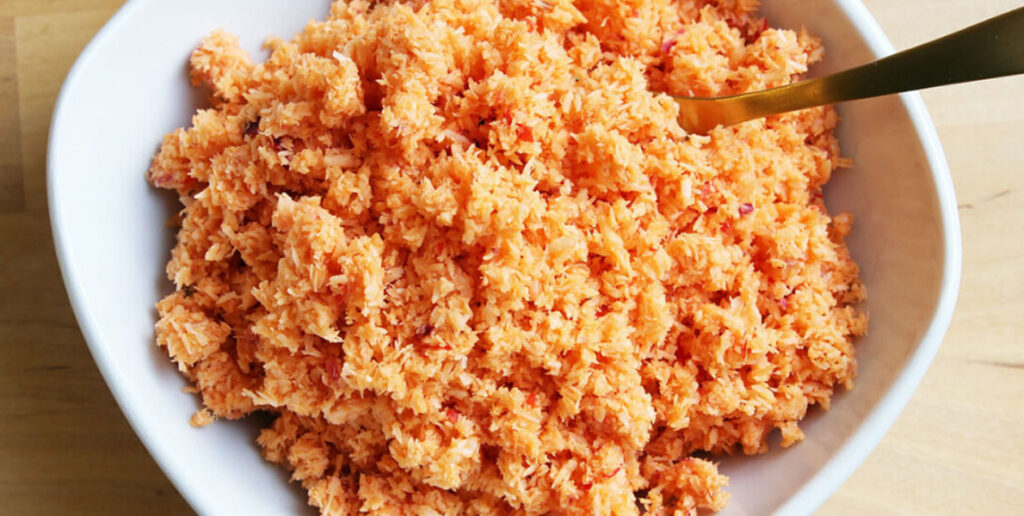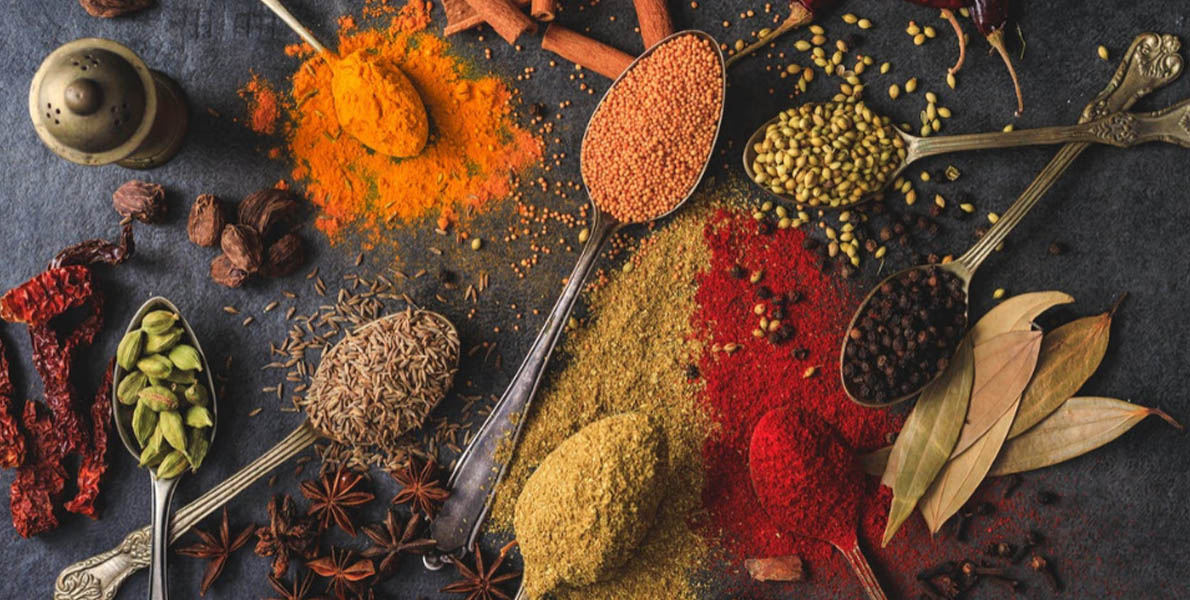What other things can you do while being confined in your home, other than staying glued to the TV and taking mini trips to the refrigerator and back to the couch? Don’t you just wish that you were on a beautiful tropical island, indulging yourself with a cocktail by the beach and tasting some authentic paradise cuisine? I was there at one point too, but then I thought to myself, what if I could bring in some of that flavours to my kitchen, and guess what? After some research, I tried out some recipes from Sri Lanka. So, I thought of sharing them with you!
For Sri Lankans food is everything, and the essential ingredient is the spices. So, before we get into the recipes, we’ll get to know about the essential spices used in Sri Lankan cuisine. Spices promote flavours, colours and fragrance of food. If the spices are used in the correct quantity and blend, spices can do magic for even the most ordinary food, transforming it into fragrant and sumptuous meals. Here are some interesting points when using spices:
- When a blend of the proper spices are used in a dish, it will create a refreshing aroma and flavour.
- Not using too much flavour can boost the aroma and spiciness.
- Heating spices in oils or fats can amplify their fragrance and flavour.
- Fresh spices smell and taste better than dry or processed ones.
Suggested Read: Complete guide to Sri Lanka’s Culture & Heritage
Spices in Sri Lanka
Sri Lanka has always been quite famous for the authenticity of its food, and the locals have mastered the secrets of spices for years. Most of the spices are locally grown, and Sri Lanka has been an epicentre of the spices throughout history.
Curry Leaves
The Curry Leaves Tree has fragrant leaves which are famous for enhancing fragrance & spicing up curries.
Turmeric
Turmeric is a deep orangish-yellow powder. Gives a slightly bitter and peppery flavour with earthy undertones and adds colour to food.
Cloves
Cloves are used to add depth to meats, curries and marinades.
Cinnamon
Cinnamon is often used to spice up chocolates, deserts and beverages but also for alcohol flavouring and medicine, and is used for vegetable & meat curries in Sri Lanka.
Pepper
Pepper is used for its strong aroma and its spiciness as a chilli replacement.
Cardamom
Cardamom is used as a cooking spice as well as flavouring tea, coffee and desserts.
Lemongrass
Lemongrass is a culinary herb which as a subtle citrus flavour mainly used in fish curries.
Nutmeg and Mace
Nutmeg is the seed and mace is the reddish netlike covering surrounding the seed. Nutmeg and mace are used to flavour many sweet dishes and many savoury dishes.
Ginger
Ginger is used as a spice for food, flavouring for beverages.
Alright, now let’s get cooking!!!
Sri Lankan meals usually consist of rice served with sides of vegetables, meat curry and side-dishes include pickles, chutneys and sambals. Here are three savory dishes that would be a perfect combo with rice or flatbreads and a dessert.
Suggested Read: Sport and Adventure in Sri Lanka
Maalu Ambulthiyal (Sour fish)

- 2 lbs Fish (Halibet, Salmon or Tuna)
- 10-15 pieces Garcinia
- 1 1/2 tbs Salt
- 1 1/2 tbs ground black Pepper
- 1/4 tsp Turmeric powder
- 1 sprig Curry Leaves
- 1-2 pieces Pandan
- 2 pieces Cinnamon
- 2 cloves Garlic (crushed)
- 1/2 tsp roasted Curry powder
- 1 cup of water
Directions
Wash and cut the fish into 15-20 pieces. Place the garcinia pieces in a pan, add a little water to cover and simmer for about 5-10 minutes. Add salt, pepper, chilli powder, Tumeric, curry powder to the fish pieces and mix well (until all the pieces are well coated). Drain the garcinia pieces and crush into a coarse paste. Mix the paste with the drained water and add to the fish, mix well. Arrange the fish in a shallow pan and pour the liquid over the pieces. Wash the mixing bowl with 1 cup water and pour over the fish. Swirl the pan to coat the pieces with the liquid. Add the curry leaves, pandan, cinnamon & crushed garlic. Cook over slow heat until the fish is done. For a completely dry dish, transfer the fish and thick gravy into an ovenproof container and leave it in a warm oven until completely dry.
Pumpkin Curry

- 450g (1 lb) pumpkin
- 2 tablespoons desiccated coconut
- 5 cloves garlic
- a few curry leaves
- ½ medium-sized onion
- 1 teaspoonful coriander powder
- ½ teaspoonful cumin powder
- 1/4 teaspoonful turmeric
- 1/4 teaspoonful black mustard seed
- 1 teaspoonful oil
- salt to taste
- 28g (1 oz) creamed coconut
- 1 cup hot water
Direction
Wash the pumpkin. Peel off the skin and remove the seeds and the fibrous flesh around the seeds. Cut the pumpkin into 2.5cm (1″) cubes. Roughly chop the garlic and the onion. In a heavy-bottomed frying pan, over a low heat, dry roast the coconut until dark brown. It requires constant stirring to prevent the coconut from burning. In a food processor assemble the peeled garlic, the chopped onion and the roasted coconut. Add 2 tablespoonsful of water and grind to a smooth paste. In a medium-sized pan heat the oil, add the mustard seeds and cook covered on a low heat until the seeds ‘pop’. Add the curry leaves and the spices (coriander, cumin and turmeric) and fry for half a minute. Dissolve the creamed coconut in hot water and add it together with the salt. Add the ground ingredients and lastly add the pumpkin pieces and bring to the boil. Simmer covered for 12-15 minutes or until a skewer when inserted goes through.
Coconut Sambal

- 100g Grated Coconut
- 8 to 12 Dried red chilli
- 5 to 7 Chopped small onions
- Juice of ½ a lime
- Salt to taste
Directions.
Grind the dried chillies, salt and half of the grated coconut. Now mix with the rest of the coconut, chopped onions and add the lime juice, check if salt is sufficient.
Watalappan

This is a Sri Lankan interpretation of steamed egg custard. It is considered to be the King of puddings.
Ingredient
- 150g (5 oz) creamed coconut
- 225g (8 oz) hard palm sugar
- 5 eggs (size 4)
- 1 teaspoonful grated nutmeg
Directions.
Place palm sugar in a pan with 50ml (2 fl oz) water. Bring to a boil, and simmer until dissolved. Dissolve the creamed coconut in 50 ml (2 fl oz ) of hot water and allow to cool. Beat the eggs and strain into a 1¼ litre (2 pint) bowl. Mix the palm sugar and milk into the beaten eggs. Add grated nutmeg. Cover bowl with greaseproof paper. Steam in a pressure cooker or colander for 1 hour. Alternatively, the mixture can be divided into 6 ramekin dishes and steamed covered for 20 minutes in a pan of simmering water.
The flavours of Sri Lankan Cuisine is something that cannot be compared with any other! If you would like to visit the beautiful island of Sri Lanka and experience the best of what it has to offer, call or email Travel Center for the best deals and Holidays!








